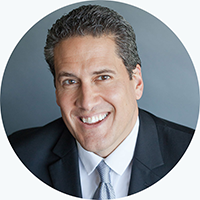Brain Cancer Calculations:
Can mathematics help optimize the way that clinical research is conducted? U of M engineers are applying mathematical modeling to design and interpret brain tumor experiments being conducted by biologists in the Masonic Cancer Center. These models can accurately simulate brain tumor growth, and even a tumor’s response to treatment, informing future laboratory pursuits. Using this newfound connectivity, researchers from the Medical School and College of Science and Engineering hope to accelerate the pace that lifesaving new cancer treatments can reach human clinical trials. Their efficient, data-driven approach could have a profoundly positive impact on the future of cancer research.
Faculty representatives
Sieging Cancer’s Castle:
While doctors have made incredible strides in cancer care, pancreatic cancer remains stubbornly resistant to many standard forms of treatment. Like fortified castles, pancreatic cancer tumors have difficult-to-penetrate “walls” and blood cell “guards” that impede a therapy’s effectiveness. U of M engineers are teaming up with pancreatic oncology experts to bioengineer a new form of therapy that can lay siege to pancreatic cancer’s castle—and provide better outcomes for patients with this dangerous disease.
Faculty representatives
Healing Hearts for Life:
The heart’s valve system is crucial to the proper regulation of blood flow throughout the body. When children are born with defects in their heart’s valves, the current course of treatment involves multiple open-heart surgeries throughout their lives to replace artificial valves that don’t grow along with the child’s body. Now, on the heels of decades of research, College of Science and Engineering and Medical School scientists have developed organic, lab-created heart valves and vessels that respond to a body’s cells—and grow along with the patient. These heart vessels have recently proven to be highly effective in animal models—and after diligent assessment of this new therapy—could be ready for patients in the near future.
Faculty representatives
A Bridge to Heart Restoration:
Medical School researchers have developed tiny, state-of-art heart pumps that can support a child’s heart during those crucial earliest moments of life. These incredible devices can serve as a bridge to a cutting-edge new heart restoration treatment that’s being pioneered by the U’s clinical experts. Meanwhile, the U of M’s biomedical engineers have found a way to use stem cells to create tissue and structures that naturally expand and contract and function as a living pump. Experts from the two fields envision a future where engineered heart tissue could be fused with heart pump technology to create a first-of-its-kind therapy to address cardiovascular disease in adults and children.
Faculty representatives
Programming Against Paralysis:
Electrical stimulation of the spine through implantable electrodes has been shown to restore volitional movement and increase quality of life in people with complete paralysis after spinal cord injuries. Medical School researchers are working with bioengineers to fine-tune this groundbreaking treatment using algorithmic programming designed right here at the U of M. These personalized tweaks to the electrical stimulation are helping some patients move their legs enough to use a cycling machine. This therapy restores control for a whole range of previously unavailable functions that drastically improve their quality of life.
Faculty representatives
One Therapy, Endless Potential:
The autonomic nervous system, including the vagus nerve, is the human body’s version of an autopilot system, constantly regulating functions like blood pressure and immune system response. Today, researchers from the University of Minnesota are collaborating on a wide-ranging, comprehensive study designed to unlock the potential of technology called vagus nerve stimulation and uncover how this tool could be used to improve almost every aspect of human health—from heart function and metabolism to immunity, healthy aging, and more.











